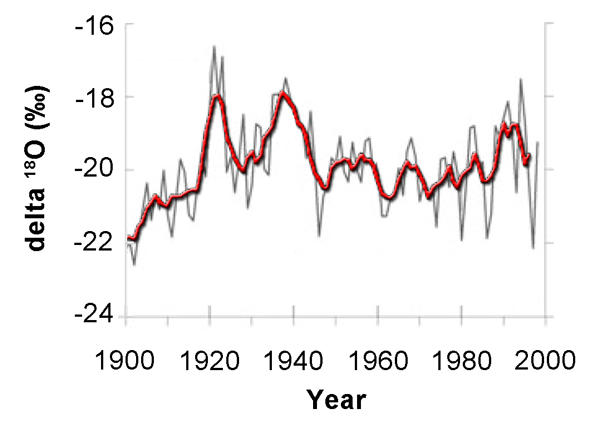Reference
Opel, T., Fritzsche, D., Meyer, H., Schutt, R., Weiler, K., Ruth, U., Wilhelms, F. and Fischer, H. 2009. 115 year ice-core data from Akademii Nauk ice cap, Severnaya Zemlya: high-resolution record of Eurasian Arctic climate change. Journal of Glaciology 55: 21-31.
Background
Climate alarmists contend that earth's near-surface air temperatures of the past decade were unprecedentedly high relative to the warmth of the entire past millennium, due primarily to the enhanced greenhouse effect they attribute to mankind's ever-increasing CO2 emissions; and they claim that this "unnaturalness" has been most strongly expressed throughout the Arctic, which they often describe as the planet's "canary in a coal mine," or as one might say more explicitly, its early-warning with respect to global warming region.
What was done
Working with the uppermost 57 meters of a surface-to-bedrock ice core that was retrieved from the Akademii Nauk (AN) ice cap (~80°31'N, 94°49'E) of the Severnaya Zemlya archipelago (which is located in the central Russian Arctic between the Kara and Laptev Seas), the authors derived a δ18O history covering the period 1883-1998, which they compared with surface air temperatures (SATs) measured at 15 weather stations distributed throughout the Atlantic and Eurasian sub-Arctic.
What was learned
These comparisons, in the words of Opel et al., yielded "good correlations and similarities," and they note that their δ18O data also had "a strong correlation with the composite Arctic (north of 62° N) SAT anomalies time series of Polyakov et al. (2003)," demonstrating that their δ18O data can serve as a proxy for the region's SAT, with the bottom-line take-home message of their study being the fact that "the δ18O values show pronounced 20th-century temperature changes, with a strong rise about 1920 and the absolute temperature maximum in the 1930s." And as shown in the figure below, it can be therefore be concluded that there was no net warming of the Atlantic and Eurasian sub-Arctic over the entire last eighty years of the 20th century.

Figure 1. δ18O (%o) vs. time (Years AD). Adapted from Opel et al. (2009).
What it means
It is indeed strange that the portion of the earth that is supposed to (1) be the first place on the planet to exhibit anthropogenic-induced global warming, and to (2) exhibit that warming most strongly, shows no net warming whatsoever over the last eight decades of the 20th century. Do you think that something might possibly be wrong with the anthropogenic-induced global warming hypothesis??? For still more reason to think so, see our review of the study of Ladd and Gajewski (2010), which is archived in our Subject Index.
References
Ladd, M.J. and Gajewski, K. 2010. The North American summer Arctic front during 1948-2007. International Journal of Climatology 30: 874-883.
Polyakov, I.V., Bekryaev, R.V., Alekseev, G.V., Bhatt, U.S., Colony, R.L., Johnson, M.A., Maskshtas, A.P. and Walsh, D. 2003. Variability and trends of air temperature and pressure in the maritime Arctic. Journal of Climate 16: 2067-2077.
Reviewed 9 March 2011



